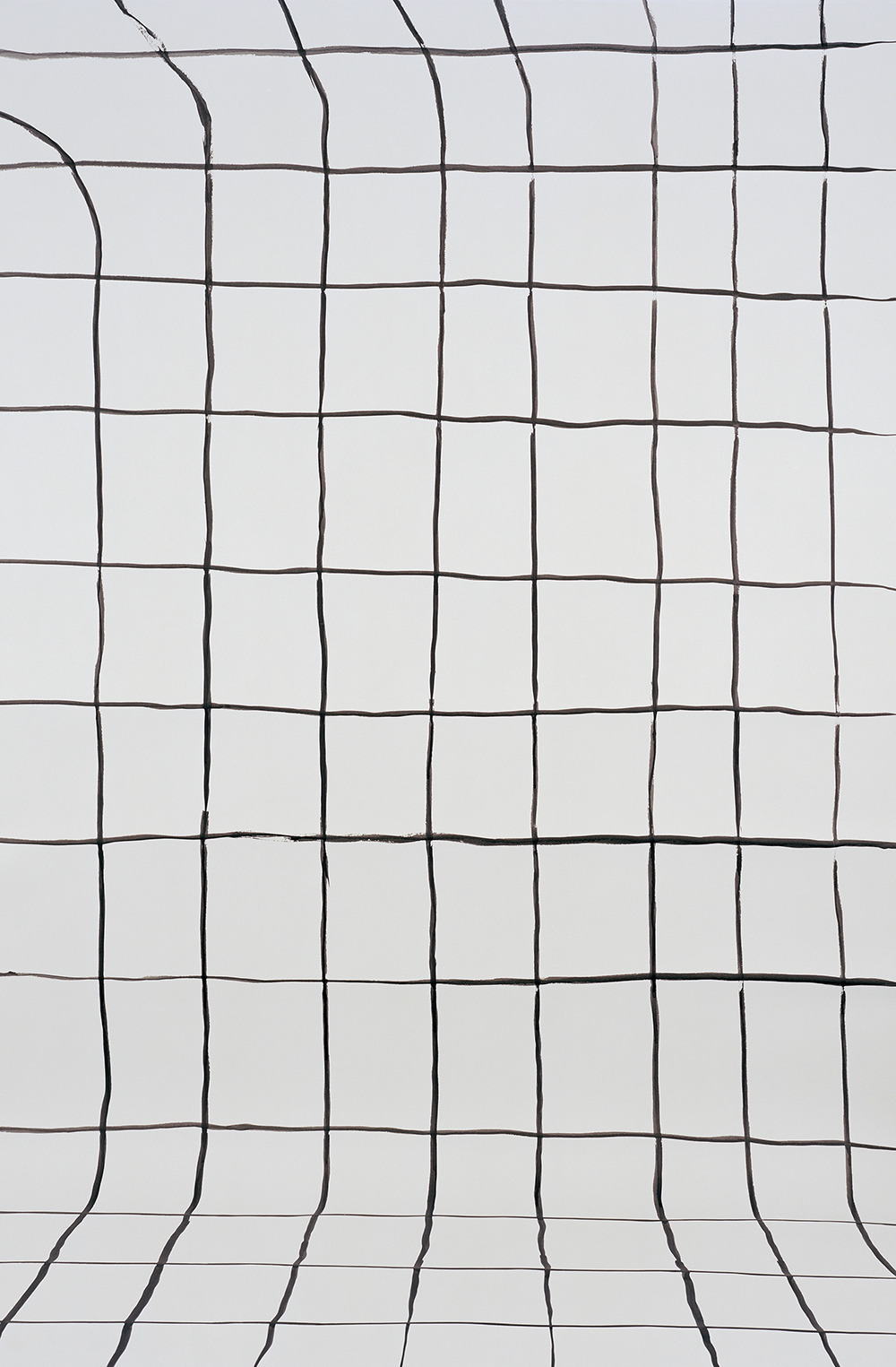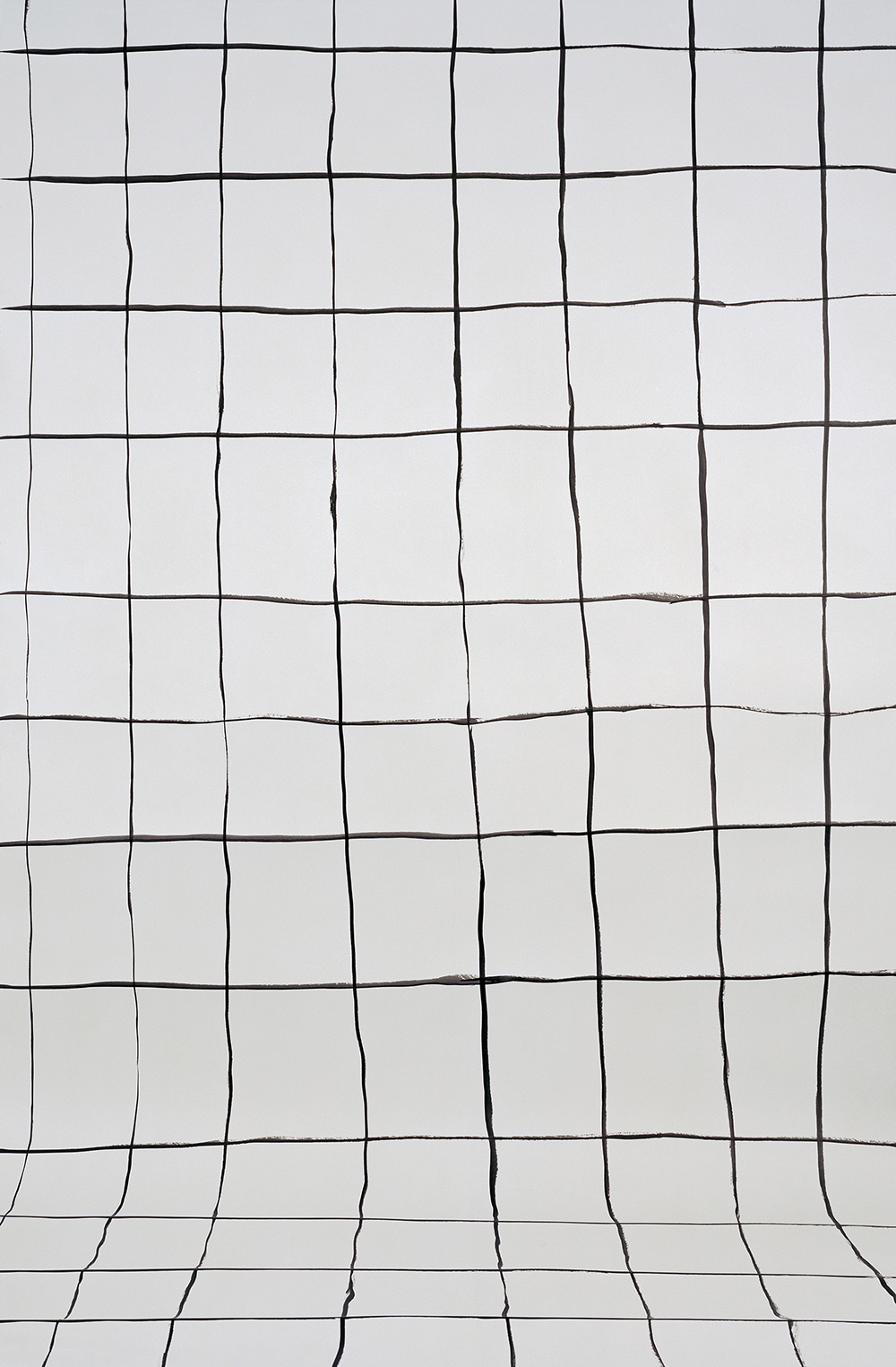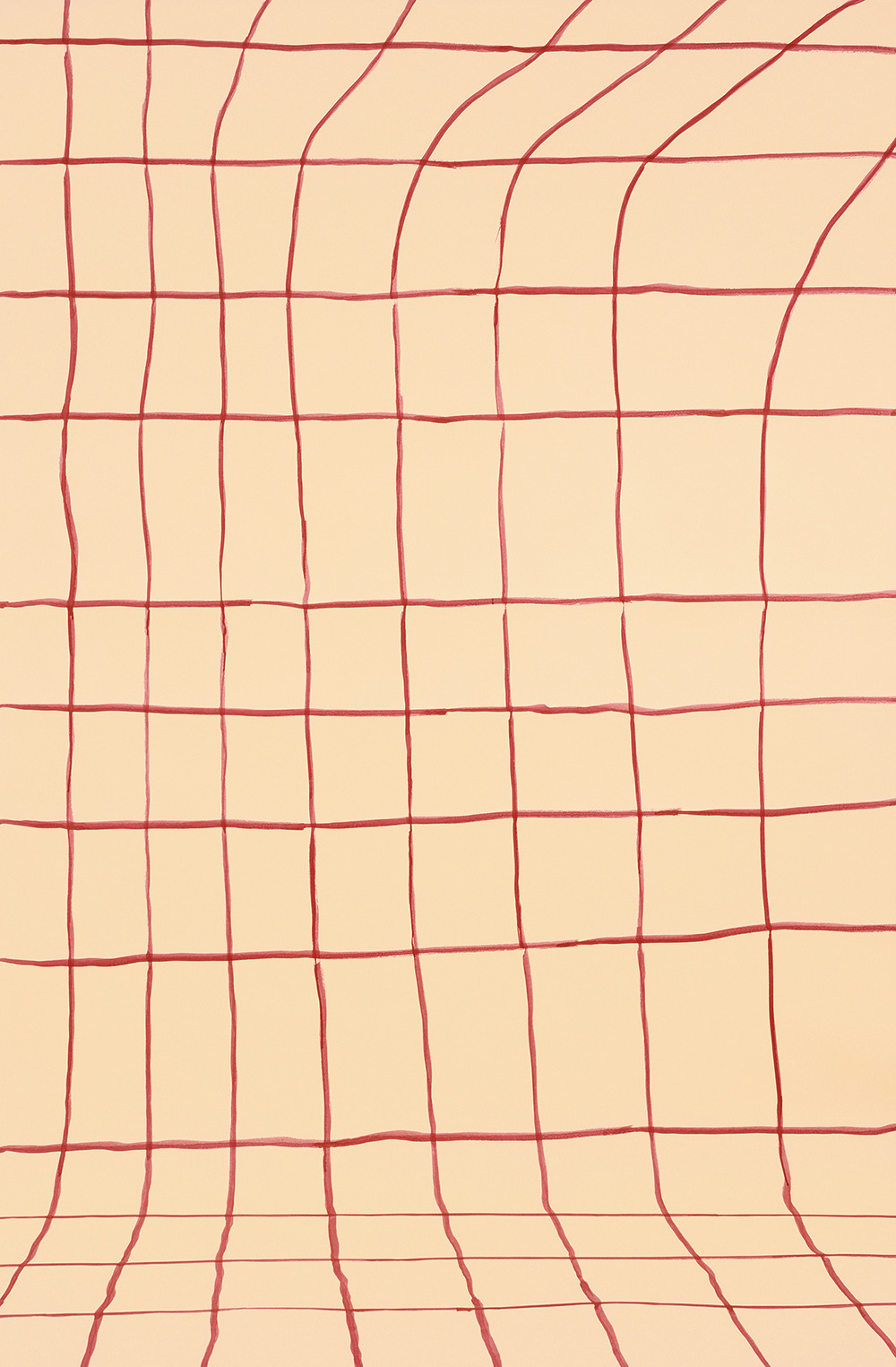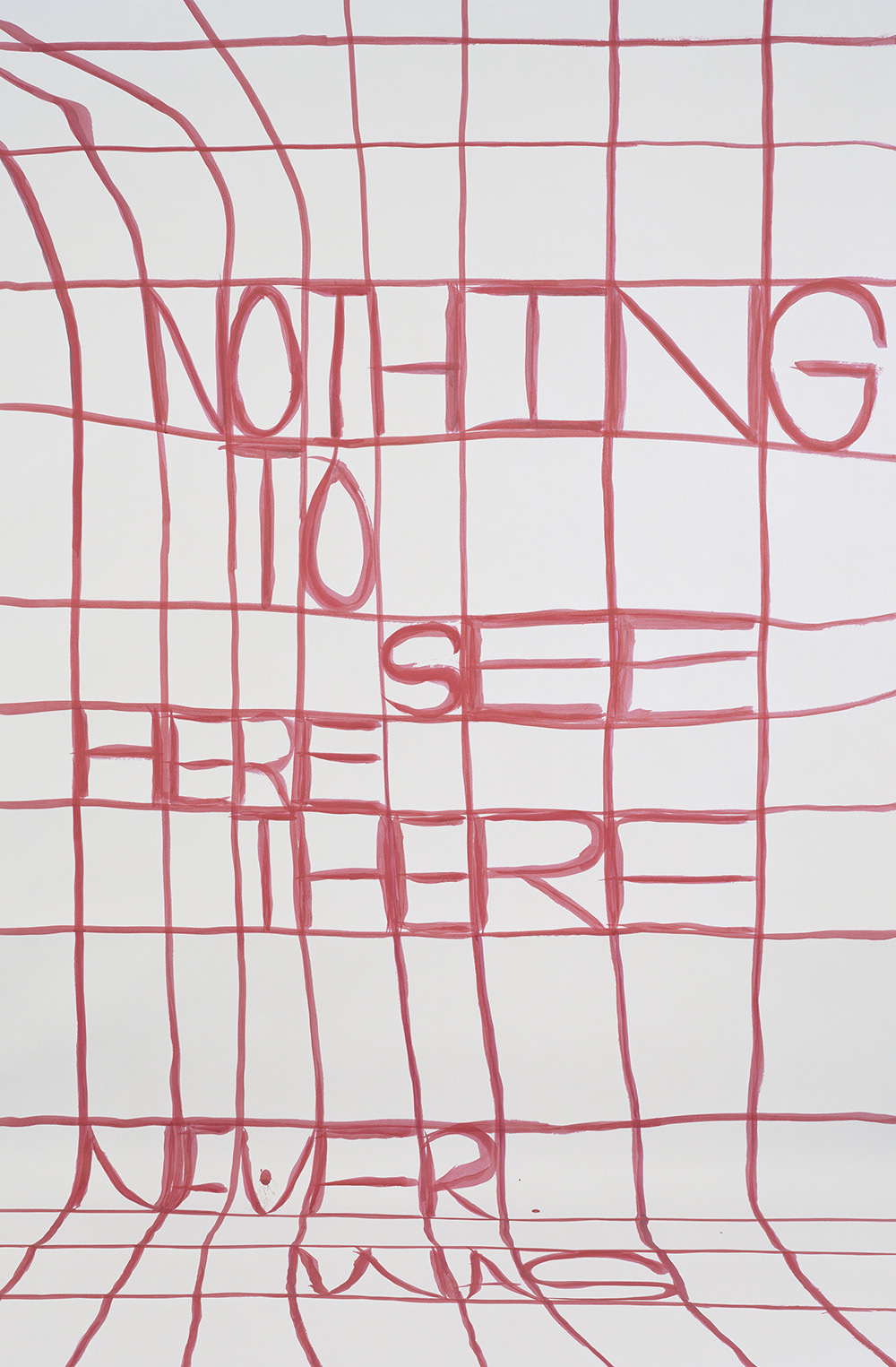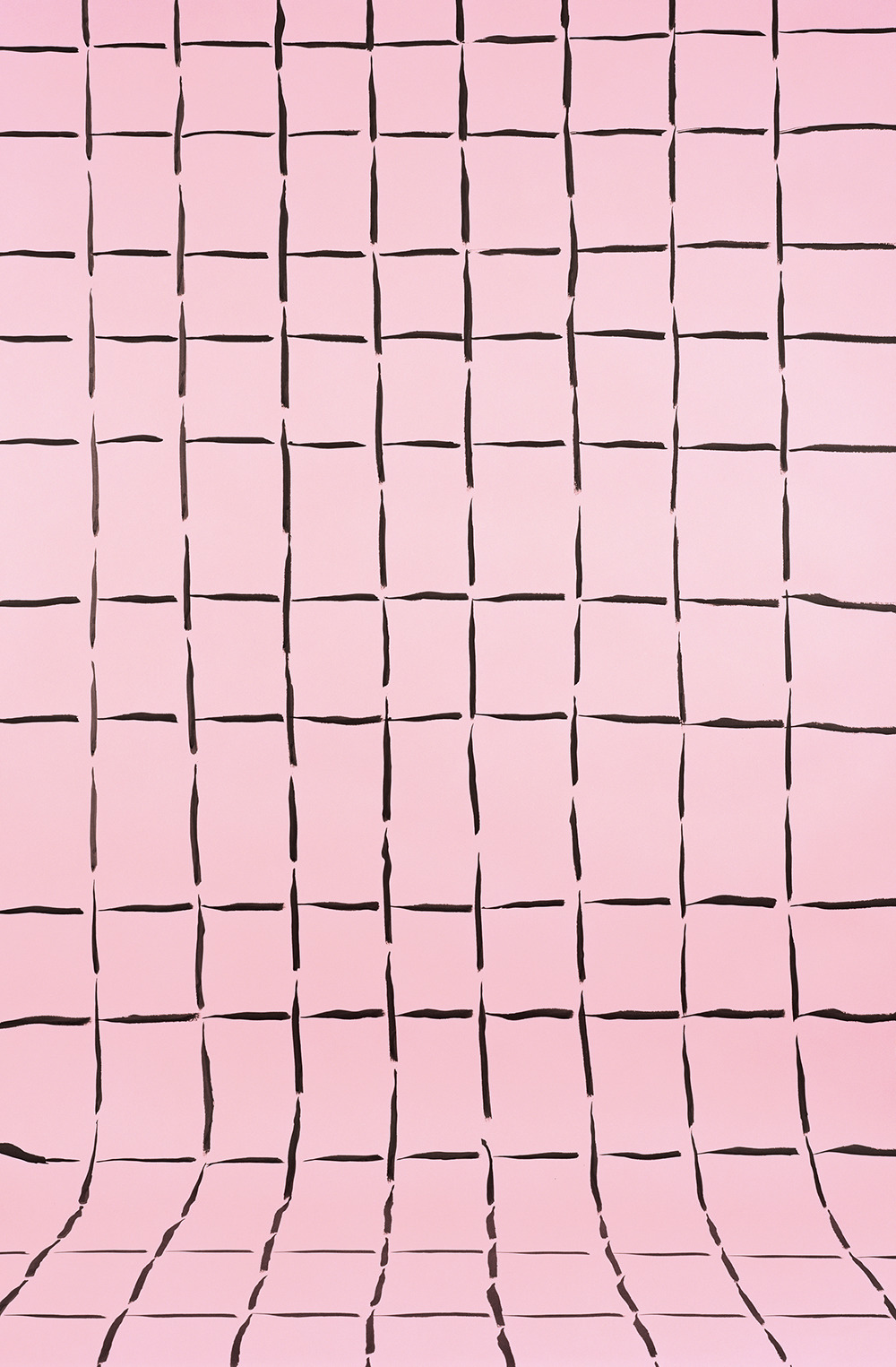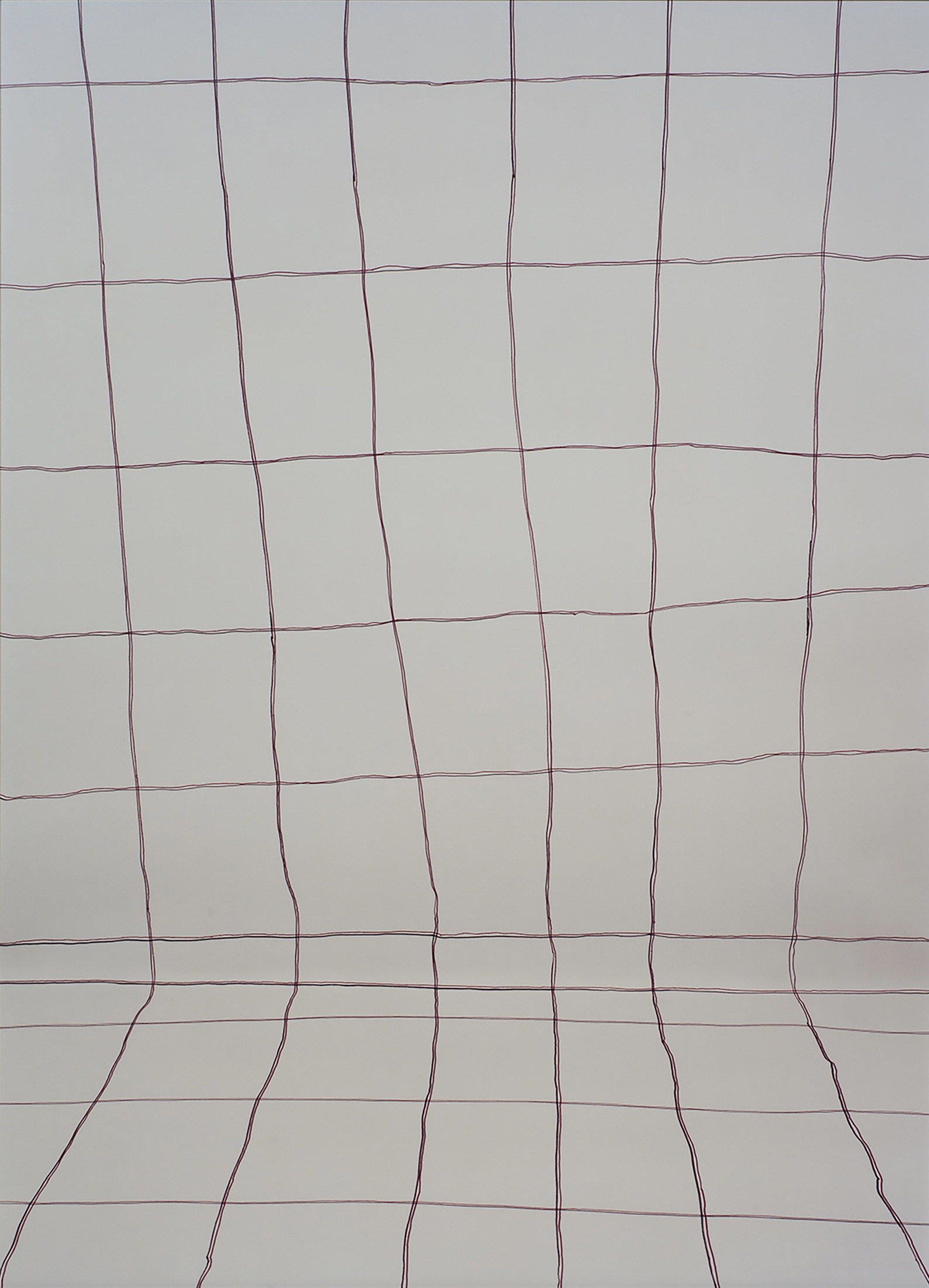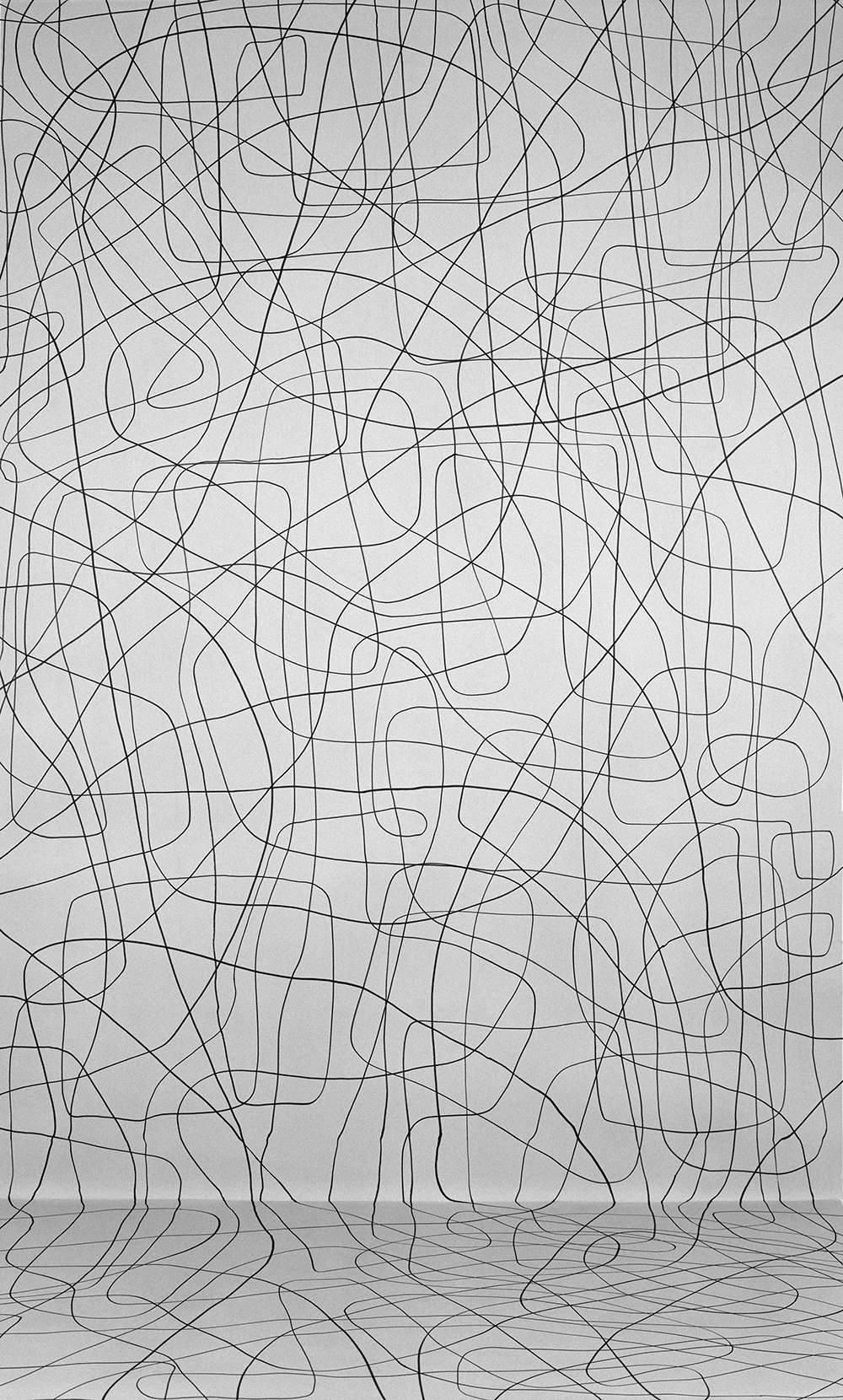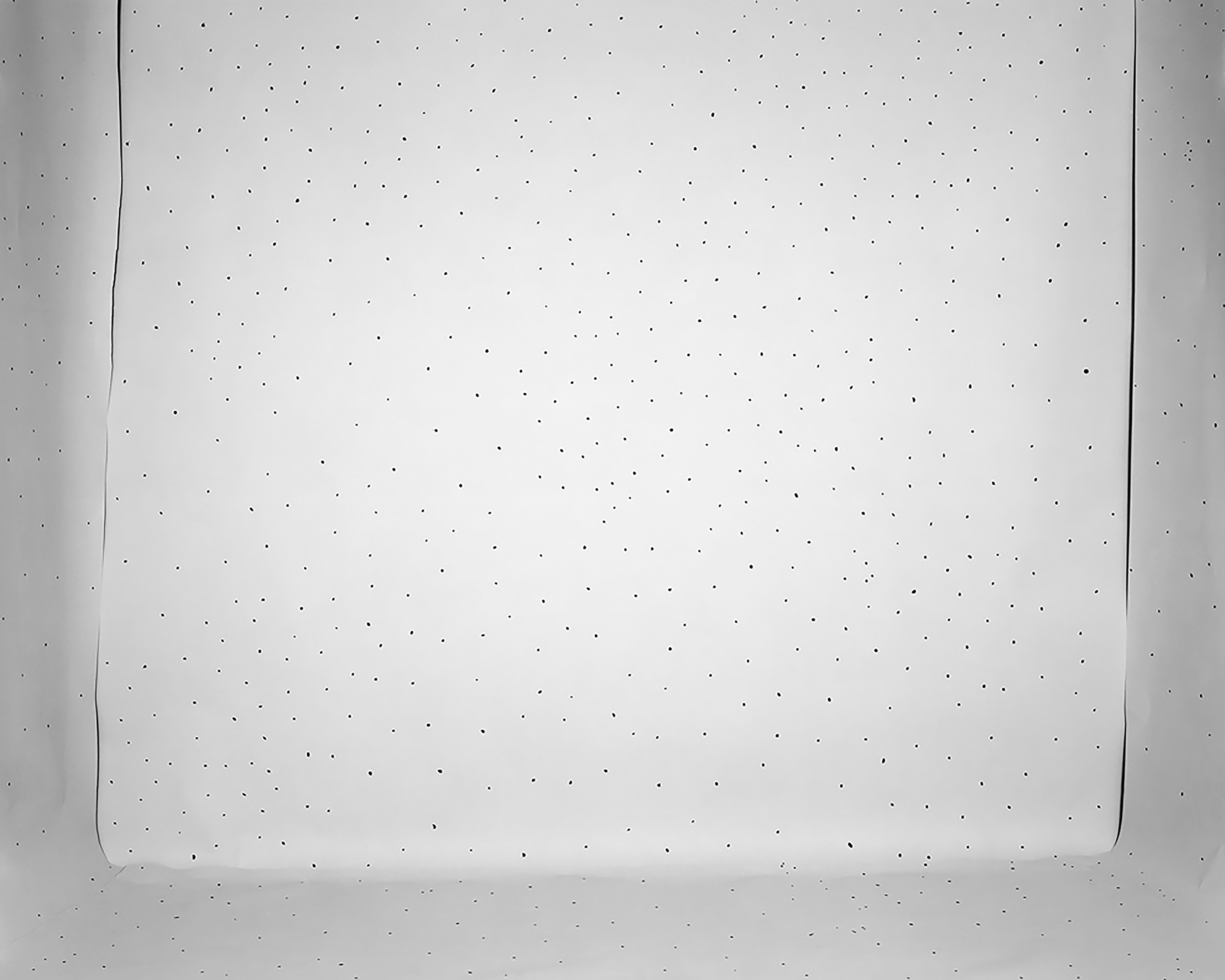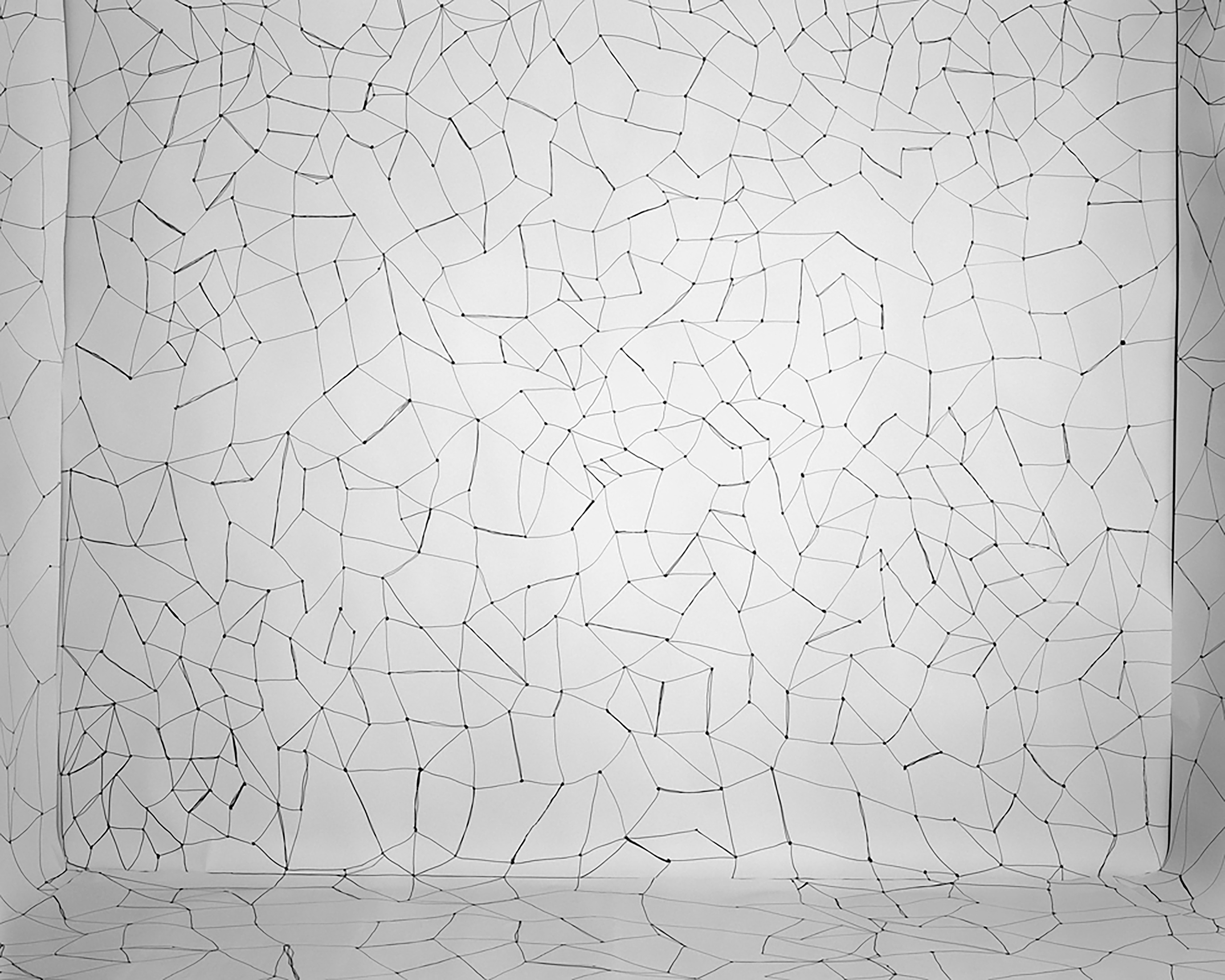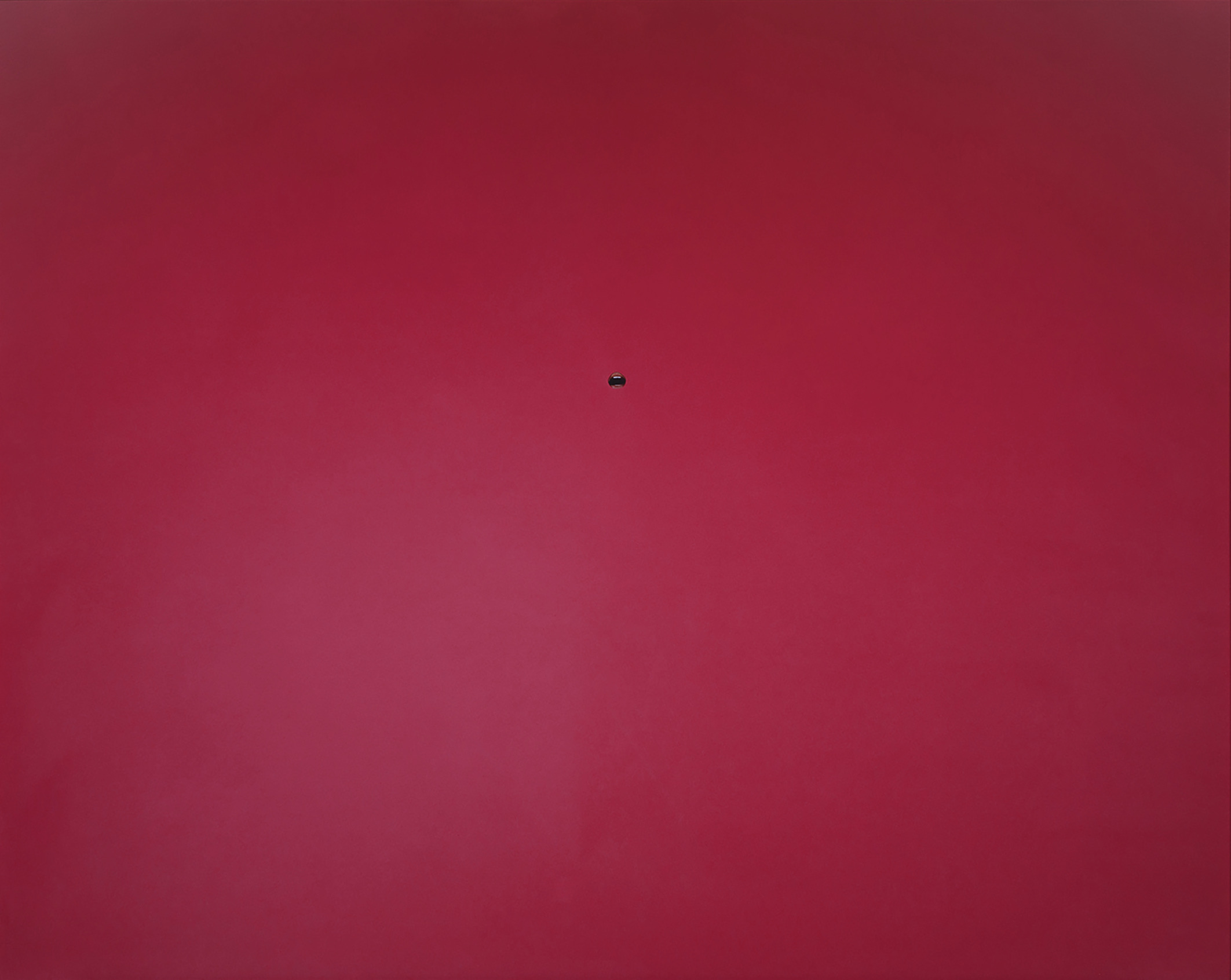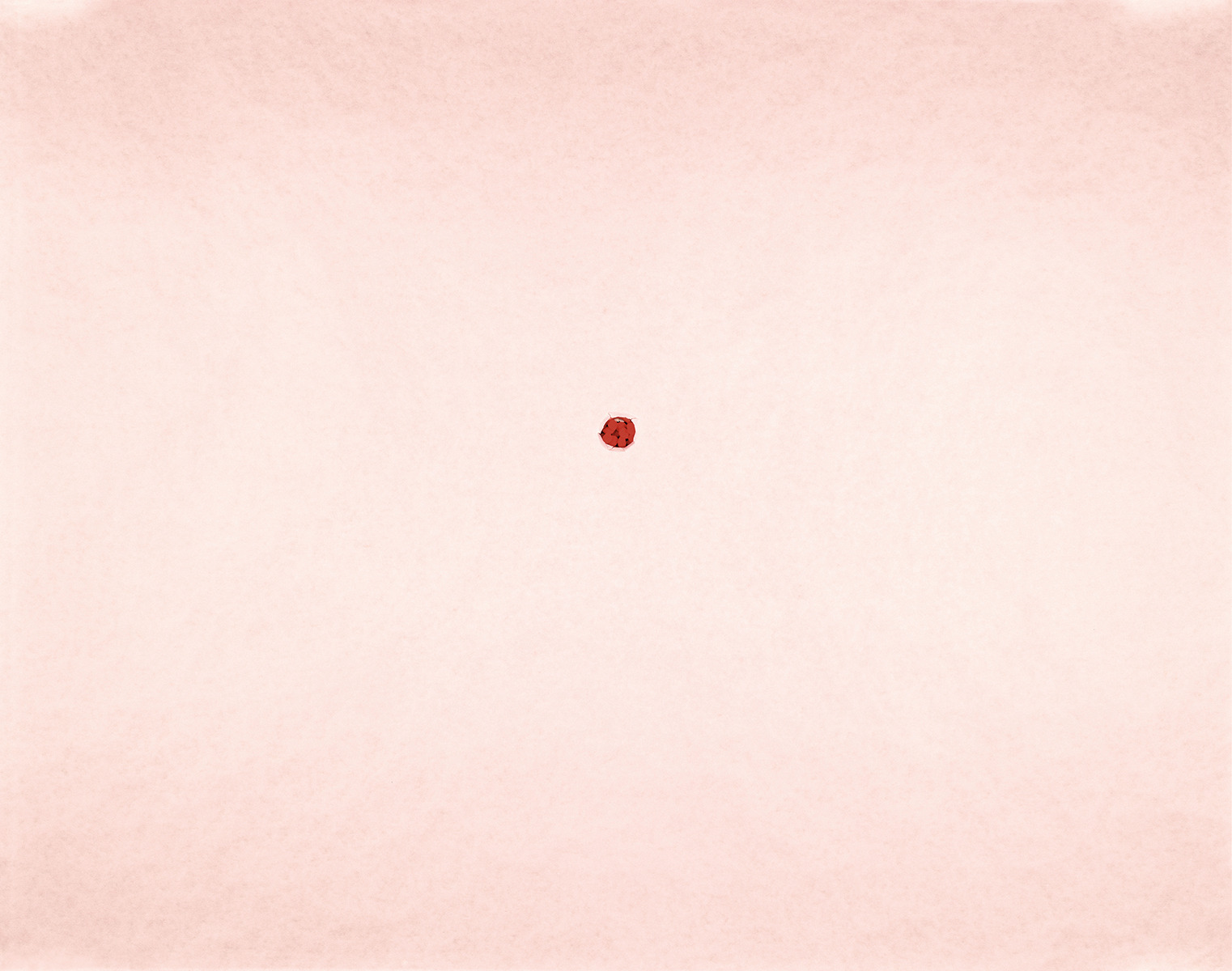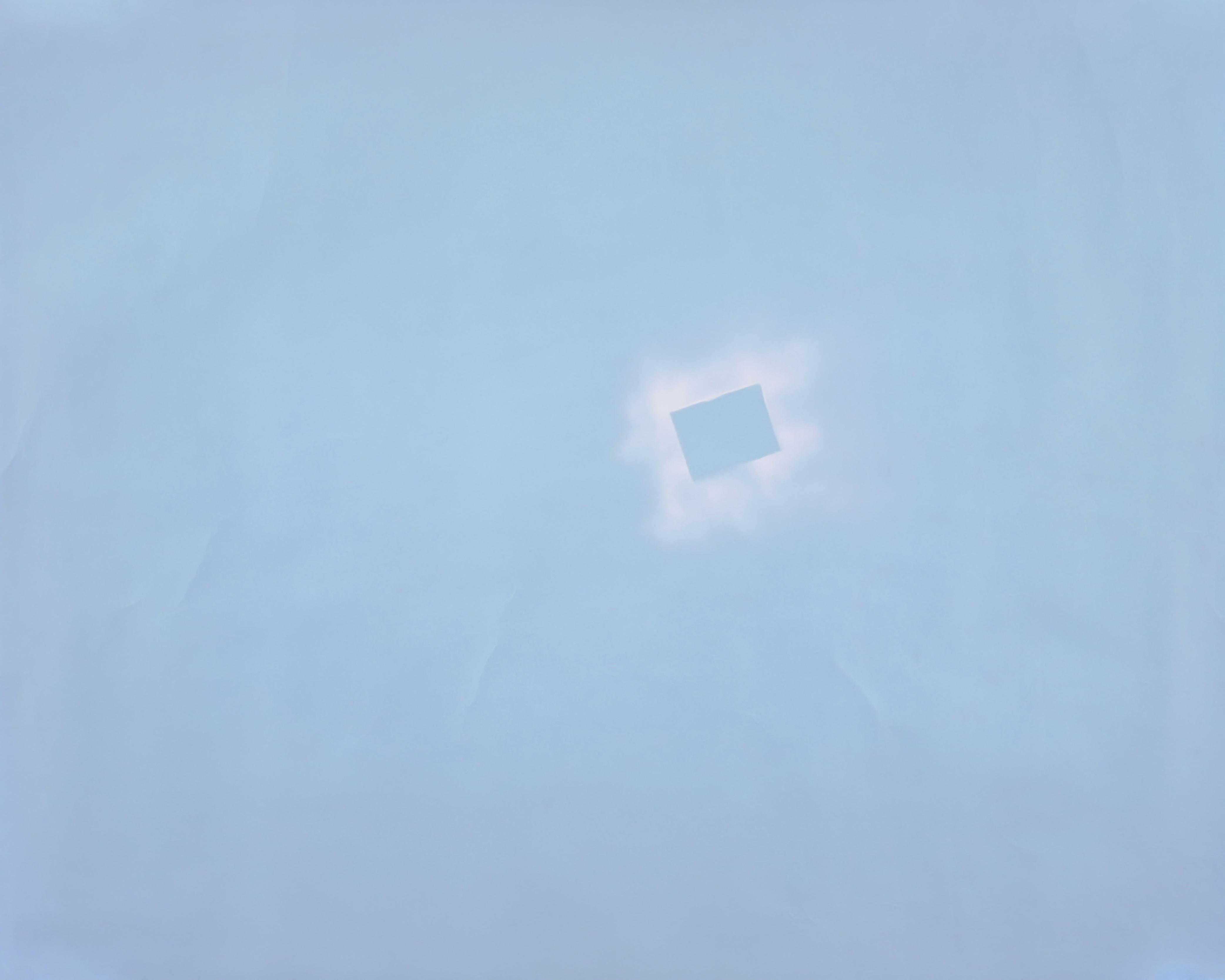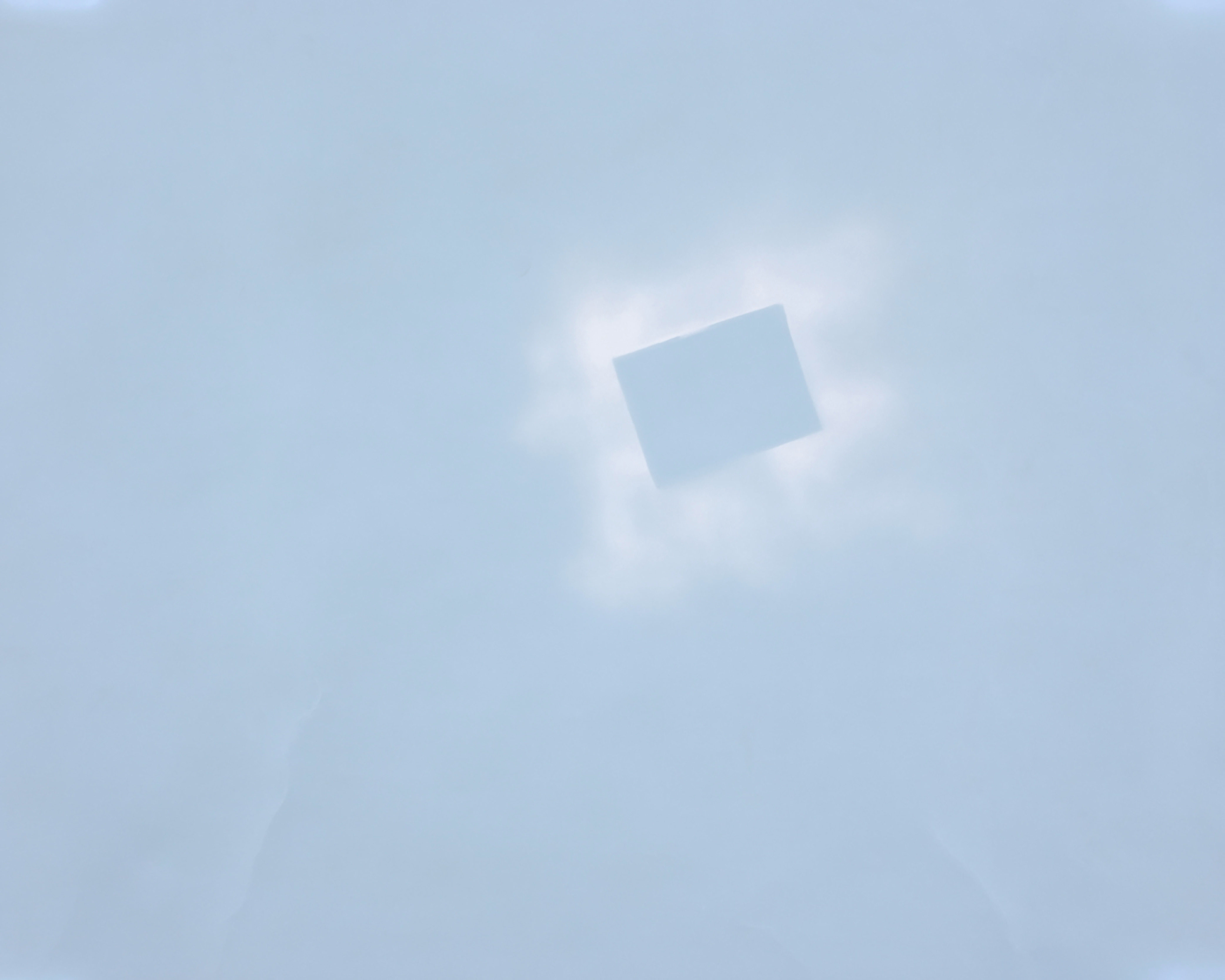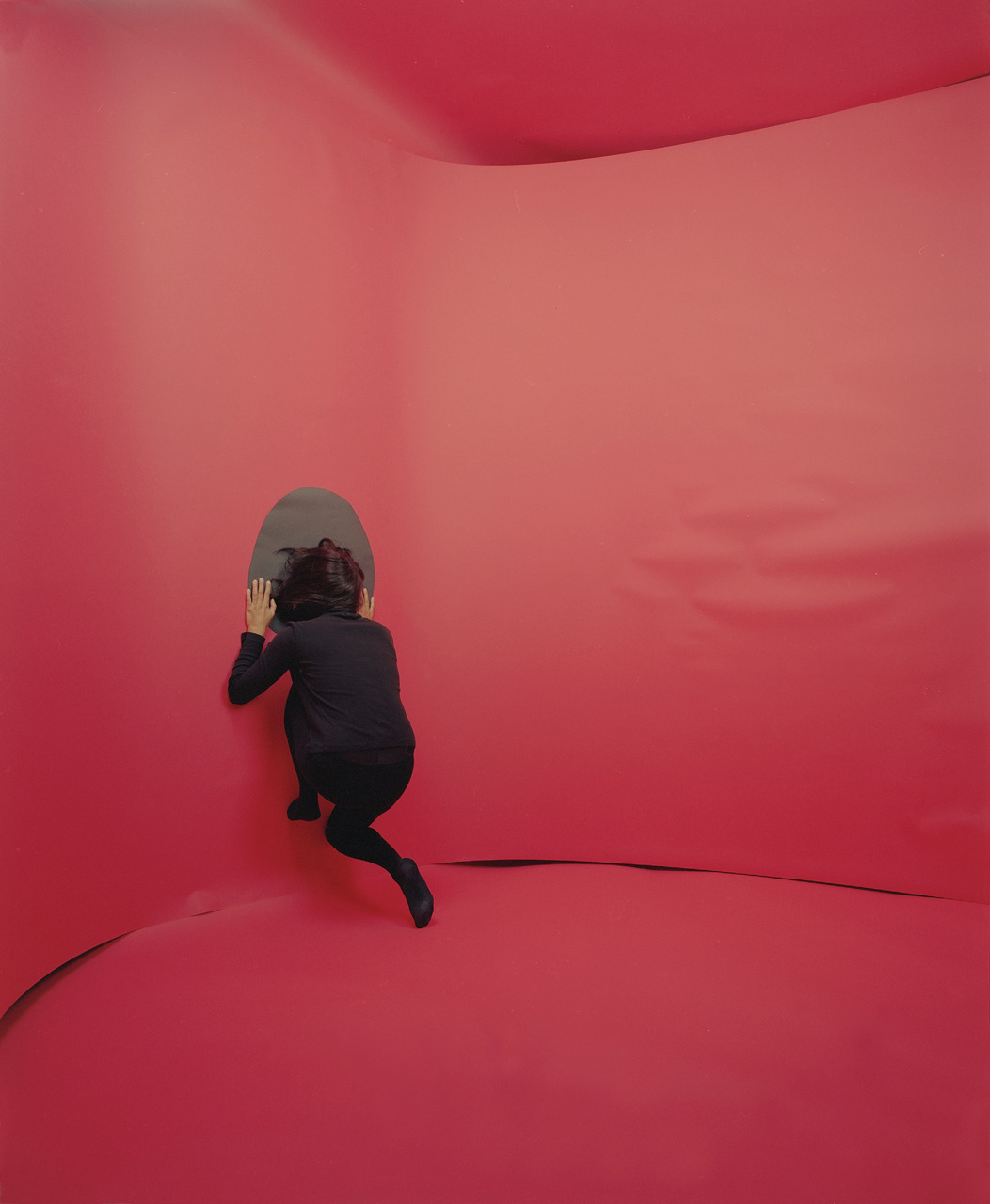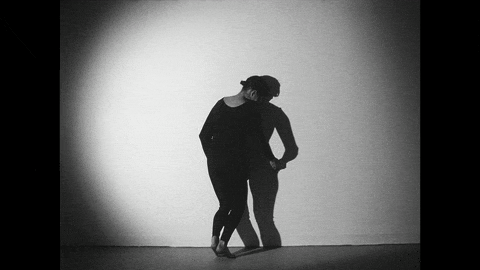
Nothing to See Here There Never Was
Gina Osterloh
Silverlens, Manila
Installation Views
About
What you see in contemporary Filipino American photographer Gina Osterloh’s current solo exhibition Nothing to See Here, There Never Was at Silverlens Gallery, composed of 14 photographic works and one 16mm film loop, defies, exceeds, and often belies expectations. Bodies (or the lack thereof), techniques of viewing, and photographic modernity preoccupy Osterloh’s mind in her latest solo exhibition.
I.
Throughout her artistic oeuvre, Gina Osterloh’s photographs are bound together by a sense of estrangement. Her work compels us to move a little closer to scrutinize their details, to see whether what we are looking at is what we had expected. These details unsettle and disorient us; they direct us to the artist’s hand—whether through the colorful cut paper in her 2008 Cut Room series or the obvious staging of large sheaths of white paper in her 2012 Dots and Web photographs, the latter two are covered with hand-drawn dots and lines. And from her hand, we are moved to think about the artist’s body, for her hand functions as a synecdoche, even if we cannot visually see either within the photographic frames.
It is this sense of the absent presence that also weaves itself across her photographic archive. In her oft-cited treatise On Photography, Susan Sontag writes: “A photograph is both a pseudo-presence and a token of absence.”1 Sontag’s words resonate in Osterloh’s recent Blue Rectangle (Wide Shot) and Blue Rectangle (Medium Shot), both of which render visible a rectangular object that had once been present. Soft clouds of paint enshroud the invisible remnants of the rectangular objects. The two photographs, when paired together, play tricks on our eyes and cause us to question the very nature of the objects themselves: What are they? Are they moving away or towards us? Are they the same object? Osterloh pictures the improbable paradox—the absent presence—but more importantly, she reveals her investment in the photographic medium itself, as a technology that is capable of concretizing and eviscerating narratological and epistemic certitudes.
Whether by camouflage or mimesis, two terms often attached to criticism of her work, Osterloh’s photographs capture her ongoing engagement, or confrontation with, the ground upon which visuality is contingent. I am reminded here of Alan Sekula and his deployment of the “shadow archive” to describe nineteenth-century photographic practices. For Sekula, the photographic archive of the nineteenth century “encompasses an entire social terrain,” which, as he argues, unified “a single hermeneutic paradigm.”2 Osterloh’s pieces go beyond the evidentiary functions of photography and the sentimentalism often associated with vernacular practices. We might argue that her turn to abstraction immediately distances her photographic work from the medium’s social functions—indeed, from the social terrain writ large. Though to dismiss the social altogether from her work would be to deny Osterloh’s hand in her craft, indeed, the whole of her body and experiences.
While we might also argue that there is neither one unified or unifying interpretative ground on which we might stand steadily when we look at Osterloh’s photographs—a disconcerting prospect, no doubt—we might, however, consider that this unsteadiness marks an opportunity for the critic-viewer to advance their own hermeneutic frame. Moreover, we might consider how deeply invested Osterloh is to photography’s history. That is, Osterloh’s work hinges precisely on a conceptualism that is as much about how we think about the functions of photography—or photography’s ontology—as it is about the quotidian acts that we participate in such as looking and reading bodies rendered (in)visible by photographic practices.
II.
Photography, and to some degree performance, allows Osterloh to enact visually a system of calls and responses in the Althusserian sense. Though rather than the audible act of hailing and responding unflinchingly to the hail—that is, being interpellated into a system for which the subjectivity of the receiver is produced—Osterloh uses photography to capture the limits, slippages, and perhaps the failures of interpellation and, ironically, the functions of photography as part of the interpellative process itself. If the interpellative system produces subjectivity of the body who is hailed, the body’s response to the hail ultimately limns a form of identificatory practice that at once may be normative, while the potential of a misfired call and response may likewise also exist. We might consider, for example, Osterloh’s 2008 Dots Front Misfire (Shooting Blanks) and the ways in which the interpellative demands of the call (the hail) is mis-recognized (the response) such that the subjectivity of the configured body staged at its center becomes a proxy body—a body that is a stand-in, an outlier of sorts. The proxy body fails to assimilate into the larger symbolic order of the room, which itself indexes the social.
We might take pause here to think about Osterloh’s 2007 series Press and Erase, in particular #2; the body hailed is not configured out of paper but rather performed by the artist. The enclosure is constructed out of large reams of red paper with a black circular cut out (the orifice) set off center. With only the hands of a body dressed in black visible, the body is positioned in such a way as to convey the body’s attempt to enter the orifice. But the body’s flattened hands evidence the impossibility of doing so. Press and Release #2 captures precisely the weighty demands of identification, and more specifically the challenges and dangers of attempts to transgress the constitution of the subject by eluding the hail (escaping through the black orifice). The red enclosure thus defines the symbolic system of the social for which bodies are constituted materially and epistemically as known or knowable subjects. When paired next to her 2014 Orifice and Color Field (Red), the body that was once present within the red enclosure has disappeared into the black void. The body has seemingly transgressed the symbolic order, yet at what cost? The black orifice has reduced the body into a singular point in the photographic frame and displaced it to an unknowable space. Transgression enacts a type of material and epistemic violence, the pain of which is rendered visible in the photograph by the body’s open mouth.
III.
Osterloh’s negotiation of a politics of sociality—or a politics of belonging—runs across the gamut of her oeuvre. Yet Osterloh’s engagement with sociality is one based not on expected or aspirational models of communal or collective successes, but rather her work offers a counterintuitive challenge to notions of identity formations facilitated by the very nature of photography, especially within minoritarian communities that invest in particular types of narratives of belonging. If earlier works pictured the construction (constructed nature) of bodies within the photographic field through performance and paper and cardboard creations, Osterloh makes a distinct move in recent work to reduce processes of identification, and more broadly sociality, to their most minimalist of structures. Think here, for example, of the photographs Dots and Web, which on the surface picture respectively benign-looking dots and webs; to leave interpretation at just what is visible would undermine the investment that Osterloh has with photography’s ability to capture those which are not manifest visually but rather intellectually. This conceptual fundament, of which the absent presence is part of a larger aesthetic ethos, creates opportunities to think about Dots and Web as meta-commentaries on those that comprise the social (dots) and the social’s investment in cohesion (webs). It is only later that we see in Drawing for the Camera (2014) the limits of the social’s imperative for cohesion through its entropic configuration of lines.
Dots and Web guide us to Osterloh’s most recent work in Nothing To See Here, There Never Was (Grids #1-#6), Drawing for the Camera, and Intimacy Is Never Perfect, which, prior to the exhibition at Silverlens, were shown at the François Ghebaly Gallery in Los Angeles in 2014. Looking at Osterloh’s turn to gridded systems, I am reminded of Martin Jay’s essay “Scopic Regimes of Modernity,” in which he argues against Cartesian perspectivalism, describing it as the “the dominant, even totally hegemonic, visual model of the modern era,” which “best expressed the ‘natural’ experience of sight valorized by the scientific world view.”3 In Nothing To See Here, There Never Was (Grids #1-#6), Osterloh unwittingly (or not) offers up a challenge to the singular scopic regime to which photography’s ontology is firmly associated. The gridded patterns in Osterloh’s series do not correspond to the Western Cartesian model of perspective, which has been associated by scholars and critics to the masculine and heterosexist gaze—a frame that marks photography’s ontological foundations as rational, gendered, and sexualized. These attributions of photography can and should be applied to the ways in which the social body is constituted by the medium itself. Osterloh’s gridded photographs perform a type of epistemic work that questions the possibilities of multiple visual regimes that photography is capable of paradoxically producing, doing so in an ironic and self-referential manner. Moreover, the social body for Osterloh, absent and yet also eerily present, within the artist’s grid systems is always creating new modes of vision and representation and non-normative modes of social communion. There is perhaps Nothing to See Here, There Never Was, as is written in the piece for which the current show is titled. We might think of the title as an apt rejection of the dominant visual systems that have dislocated the subject precisely because of the very constraints placed upon the medium of photography.
IV.
By way of conclusion, I turn to Osterloh’s meditative 16mm film projection loop Press and Outline. Described by the artist as “both odd as well as intimate,” the viewers of Osterloh’s film watches the artist, clad in a black leotard, slowly and sometimes awkwardly performing a dance with her shadow in silence. Osterloh’s movements are slow and yet deliberate, and her body is never separated from her shadow—it is perhaps her shadow that takes the lead and influences Osterloh’s kinesthetics. Like her photographs, Press and Outline separates the viewer from that which is being observed—Osterloh’s performance at center—producing a distance that is marked by an a type of ethnographic objectivity (think here of the popular ethnographic convention of positioning the camera in front of bodies of the Other and letting the camera roll). The film also envisions a type of queer reduplication of self, endlessly dancing with each other by the very nature of the looped film.
There is certainly something queer about the black-and-white film and Osterloh’s performance therein captured. Indeed, the anachronistic feel of the 16mm film hearkens to a time and space where film was used tout court to supplement scientific studies of the Other. Let me pause here and qualify my use of the term queer. On one hand, my deployment of queer is to suggest one possible epistemic lens through which to view Osterloh’s film and does not necessarily act as identifying marker of Osterloh’s lived real-time experience. That being said, my use of queer is also not meant to evacuate the term of the non-normative sexual body by merely using it as an analytic frame; on the contrary, it is precisely the engagement with (hetero)normativity that marks the potency of the term. Thinking about the film as queer and using a queer critical framework allow us to question how Osterloh’s moving picture is in constant negotiation of larger normative visual regimes that govern modes of identificatory engagement. The dance that Osterloh performs exploits photography’s narcissistic ontology, as Carol Mavor writes, “for queer (re)production.”4 What is produced then is a queer performance that is at its core about the self, and more specifically the larger forces that constitutes the precarious ground on which the self is endlessly constituted.
A dancer’s worst nightmare is to fall, after all.
[i] Susan Sontag, On Photography, (New York: Picador, 1973), 16.
[ii] Alan Sekula, “The Body and the Archive,” October 39 (Winter 1986), 10.
[iii] Martin Jay, “Scopic Regimes of Modernity” in Vision and Visuality (Seattle, WA: Bay Press, 1988), 4–5.
Words by Jan Christian Bernabe, PhD
Gina Osterloh (b. 1973, Texas, USA) investigates operations of mimesis and perception, along with new ways of addressing identity through photography, film, video, and performance. Solo exhibitions include: Press, Erase, Outline, Slice, Strike, Make an X, Prick, Francois Ghebaly; Anonymous Front, Yerba Buena Center for the Arts, San Francisco; Group Dynamic and Improper Light, LACE, and Body Prop, Silverlens, Manila. Collaborative projects include Outside Crease of the Elbow with Paris-based artist Ana Vega, Commonwealth & Council, Los Angeles. Osterloh received her MFA from the University of California, Irvine. She teaches a diverse range of photography, performance art, and time-based media classes throughout the Greater Los Angeles area at various universities.
Works
